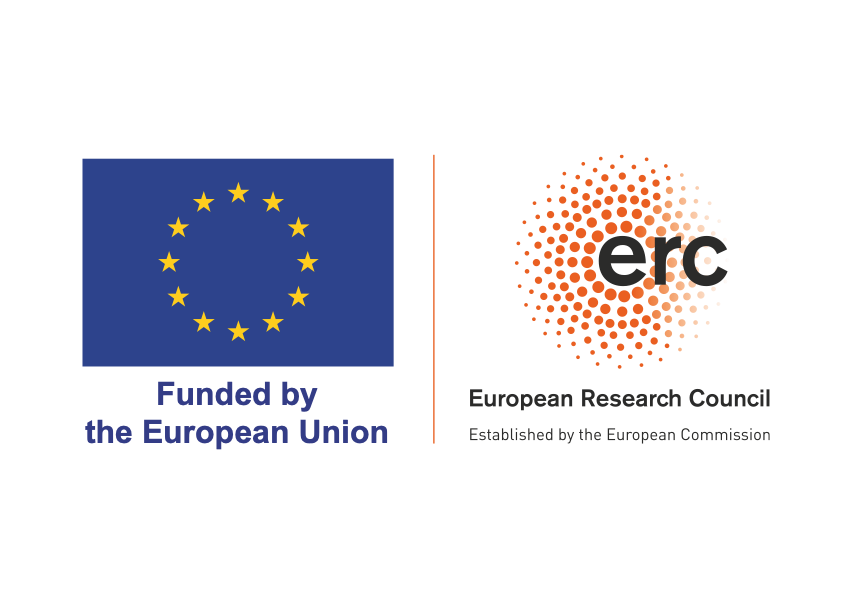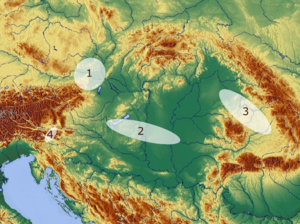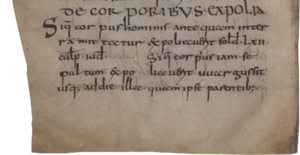Overall, the tendency has been, and often still is, to see such interferences as a hindrance to archaeological research and to interpret the removal of objects as materialistically motivated and unlawful plundering against the customs of that time. New research, however, has emphasised regularities in the practice, which has led to the hypothesis that the removal of artefacts could be part of practices relating to the dead.
The PresentDead: Interactions between the living and the dead in early medieval Central and Eastern Europe from the 5th to the 8th century CE
Funded by the European Union (ERC, PresentDead, 101089324).
The project aims to investigate the practical, conceptual and emotional dimensions of human interactions with the dead (graves, human remains and artefacts) in early medieval Central and Eastern Europe from the 5th to 8th centuries CE. Based on archaeological and textual evidence, diverse contexts of contact will be investigated through an innovative approach combining cutting-edge scientific methods, technical solutions and new theoretical approaches. The project’s working hypothesis is that perspectives on interaction with the materials of the dead will vary with the ritual stages of funerals.
The main objectives of the project are:
1. Archaeology: Investigating the spectrum of practices in the archaeological evidence
The investigation of archaeological remains ranges from high-resolution approaches, in which many details are collected (micro-archaeological excavations and reconstructions), to low-resolution analyses (integration of existing data sets and computational processing of already published and online accessible image data). The high-resolution case studies inform all of the other approaches.
Central to the project is a methodological framework for bio-archaeology and field archaeology called ‘Archaeothanatology’, which has been developed in France over the last five decades. It pays particular attention to the formation of the archaeological record of a grave, that in the case of an early medieval inhumation grave develops from the burial of a dressed fresh corpse soon after death, usually in an organic container and possibly furnished with artefacts. The method will also be used create a very detailed reconstruction of how human remains and artefacts had been interacted with in the grave.
High-resolution analysis: microarchaeological excavations and reconstructions
The PresentDead micro-archaeological excavations include, among other things, 3D single finds recording, including all bones in a “disturbed” position; strategic soil sampling (disturbed and undisturbed samples) and wet sieving of the sediments.
The detailed excavation data forms the basis for a whole range of scientific investigations and also for the 3D visualisation of the formation process of the graves. Digital models will be used to visualise and test different interpretations.
As this is a resource-intensive methodology, only a small number of selected graves are analysed in this fashion.
Work in archives and collections: Case studies in today’s Austria, Hungary, Romania and Slovenia
Based on results from previous excavations of early medieval cemeteries, we will closely examine findings from graves that were re-entered and compare them with some that were left intact. The basis for our analysis is our newly developed PresentDead research protocols for the analysis of human skeletons, artefacts and, of course, the excavation documentation.
1. Danube Valley (Eastern Austria)
2. Pannonian Plain (Hungary)
3. Transylvanian Plateau and the North Pannonian Plain (Romania)
4. South-eastern Alpine region (Austria & Slovenia)
Low-resolution analysis: data integration and (semi-)automatic classification of image data
The third part of the archaeological analysis involves exclusively computational processes. Our project database will be extended with existing data sets and in a further step an attempt will be made to classify images of grave drawings according to the type of grave opening and disturbance. The aim is to acquire a large-scale view across the regions, albeit with less information from individual graves.
2. Analysis of actions and perspectives in different text genres
The disturbance of graves and/or corpses appear in various genres of early medieval texts. The identification of relevant writings begins with two broad categories, namely historiographical and regulative texts. The search will then be extended to other written sources using keywords and index terms related to corpses, burials and graves in critical editions and digital corpora of medieval texts. Selected texts will then be subjected to close analysis and comparative study, in order to reveal the roles of terminology and affective language and the strategies for interacting with the dead that were imaginable by early medieval authors.
3. Synthesis of material and written perspectives guided by an innovative technical solution for the semantic integration of data
Through the interdisciplinary work of the project team, the synthesis and integration of the different perspectives on interventions in graves is an ongoing process throughout the duration of the project. Themes and questions arising from the material evidence will influence the textual analysis - and vice versa. Furthermore, the complexity of the relationships between the information from the different types of sources will be digitally represented by innovative technical solutions through the semantic integration of the project data.




